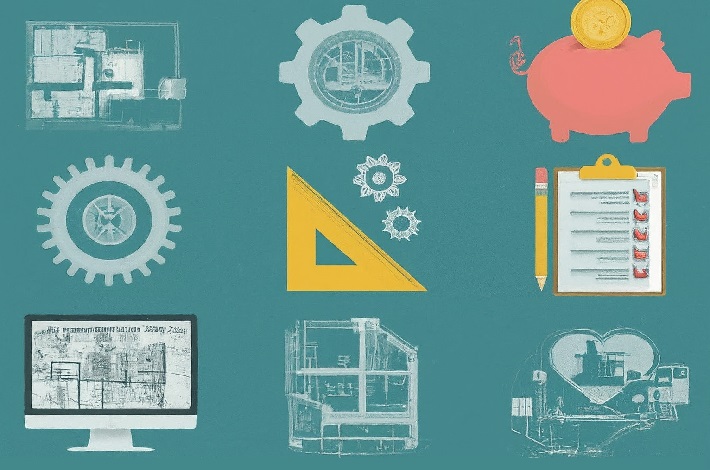What is Cost Estimation in Construction?
Construction cost estimation involves predicting the financial investment required for a building project, crucial for budget planning and decision-making. Various techniques are employed at different project stages and based on available information.
Cost Estimation Techniques in Construction - Methods of Estimation
Here you can explore various methods like parametric, unit pricing, and software-based approaches to plan your building project finances effectively.
Cost Estimation Techniques in Construction Projects
Cost estimation techniques in construction projects are methods for predicting the total financial investment needed to complete a building project. These techniques, ranging from rough order-of-magnitude estimates to detailed quantity takeoffs, help with feasibility studies, budgeting, and making informed decisions throughout the construction process. Read some effective methods below.
Parametric Estimating
This technique uses statistical relationships between historical data and project parameters (such as size, area, or volume) to estimate costs. It's particularly effective when there is ample historical data available for similar projects.
Bottom-Up Estimating
Bottom-up estimating involves estimating the costs of individual components or work packages within the project first, then aggregating them to determine the total project cost. While it can be time-consuming, it often results in more accurate estimates.
Quantity Takeoff and Assembly Estimating
This method involves taking off quantities of materials, labor, and equipment needed for each construction element and then pricing them. It provides detailed and precise cost estimates, especially for projects with well-defined scopes.
Vendor Bid Analysis
For procurement-related costs, such as materials or subcontractor services, obtaining bids from vendors through a competitive bidding process helps in analyzing and selecting the most cost-effective options.
Historical Data Analysis
Analyzing historical cost data from similar projects can provide valuable insights into cost trends, allowing for more accurate cost estimation for current projects.
Expert Judgment
Consulting with experienced professionals or subject matter experts in civil engineering and construction can provide valuable insights and help in estimating costs based on their expertise and knowledge of industry standards.
Computerized Estimating Software
Utilizing specialized software tools designed for civil engineering and construction cost estimation can streamline the process, improve accuracy, and provide detailed reports and analysis.
Life Cycle Costing
Considering not only the initial construction costs but also the ongoing operational and maintenance costs over the lifespan of the project provides a comprehensive understanding of the total cost of ownership.
Three-Point Estimating (PERT)
This technique accounts for uncertainty by using three estimates: the most optimistic, most likely, and most pessimistic. These estimates are then weighted and combined to calculate an expected cost, which can be particularly useful for complex civil engineering projects.
Important Points of Cost Estimation Techniques
1. Analogous Estimating relies on historical data from similar projects for cost estimation, while Parametric Estimating uses statistical relationships between historical data and project parameters. Bottom-Up Estimating breaks down costs of individual components, and Three-Point Estimating accounts for uncertainty by using optimistic, likely, and pessimistic estimates.
2. Expert Judgment involves consulting experienced professionals, while Vendor Bid Analysis obtains estimates through bidding processes. Reserve Analysis sets aside contingency funds, and Computerized Estimating Software streamlines the process with algorithms and databases.
3. Cost Indexes track changes in labor, material costs over time, and Life Cycle Costing considers both initial and ongoing costs. Unit Price Estimating breaks down costs per unit, and Quantity Takeoff and Assembly Estimating provides detailed cost estimates based on materials, labor, and equipment.
2. Expert Judgment involves consulting experienced professionals, while Vendor Bid Analysis obtains estimates through bidding processes. Reserve Analysis sets aside contingency funds, and Computerized Estimating Software streamlines the process with algorithms and databases.
3. Cost Indexes track changes in labor, material costs over time, and Life Cycle Costing considers both initial and ongoing costs. Unit Price Estimating breaks down costs per unit, and Quantity Takeoff and Assembly Estimating provides detailed cost estimates based on materials, labor, and equipment.



